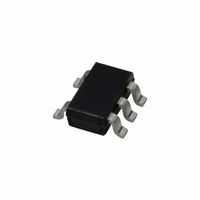LM3460M5-1.5/NOPB National Semiconductor, LM3460M5-1.5/NOPB Datasheet - Page 7

LM3460M5-1.5/NOPB
Manufacturer Part Number
LM3460M5-1.5/NOPB
Description
IC CONTROLLER PRECISION SOT23-5
Manufacturer
National Semiconductor
Datasheet
1.LM3460M5X-1.5.pdf
(9 pages)
Specifications of LM3460M5-1.5/NOPB
Controller Type
Precision Controller
Voltage - Supply
3 V ~ 3.6 V
Current - Supply
85mA
Operating Temperature
0°C ~ 70°C
Mounting Type
Surface Mount
Package / Case
SOT-23-5, SC-74A, SOT-25
Lead Free Status / RoHS Status
Lead free / RoHS Compliant
Interface
-
Other names
LM3460M5-1.5
LM3460M5-1.5TR
LM3460M5-1.5TR
App Circuit Technical Information
These values are calculated assuming a maximum ambient
of 50˚C, 3.3V input, and a TO-220 power transistor mounted
using thermal grease and a mica insulator.
A given thermal resistance can be obtained by using differ-
ent combinations of heatsink and airflow (refer to heatsink
manufacturers datasheets).
The design tradeoff here is that heatsinks which are smaller,
lighter, and cheaper require more airflow to get the desired
value of thermal resistance.
TRANSIENT RESPONSE: If the regulator is to respond
quickly to changes in load current demand, the input and
output capacitors must be selected carefully.
The output capacitor C4 is most critical, as it must supply
current to the load in the time it takes the regulator loop to
sense the output voltage change and turn on the pass
transistor. A Sanyo Oscon type (or equivalent) will give the
best performance here.
The input capacitor C3 is also important, as it provides an
energy reservoir from which the regulator sources current to
force the output back up to the nominal value. A good, low
ESR electrolytic such as a Panasonic HFQ type is a good
choice for C3.
LAYOUT TIPS: In order to optimize performance, parasitic
inductance due to connecting traces must be minimized. All
paths shown as heavy lines on the schematic must be made
by traces which are wide and short as possible (component
placement should be optimized for minimum lead length).
POWER TRANSISTOR AND DRIVER: The power transistor
used at Q4 must have very good current gain at 7A, and
wide bandwidth (high f
The D44H8 is an excellent choice for cost and performance.
The current gain of Q4 dictates the power dissipation in its
driver (Q3) which must supply the base current to Q4. If the
gain of Q4 is lowered, Q3 must source more current into its
base (and the power dissipation in Q3 goes up proportion-
ately).
The D44H8 has a guaranteed minimum gain of 40
typical gain much higher. Assuming the gain of Q4 is about
30% lower at 7A, it will still be
of load current, Q3 must supply 250 mA to the base of Q4
(worst case).
(Continued)
FIGURE 6. Q4 Heatsink Requirements for Circuit
Shown in Figure 1
T
) for this circuit to work as specified.
>
28. Therefore, to support 7A
01260312
@
4A, with
7
The power dissipation in Q3 (assuming 3.3V input) will never
exceed approximately 250 mW, which is easily handled by
2N3906 in a TO-92 case (which has a thermal resistance of
about 180˚C/W), but could be a problem for a very small
surface mount device.
If substitutions are made for Q3 or Q4, careful attention must
be paid to the current gain as well as the f
TRANSISTOR BANDWIDTH: Fast transient response that
the regulator be able to respond quickly to any change in
output voltage (which will occur if the current drawn by the
load suddenly changes).
All of the transistors specified in the schematic are very
wide-band devices (have high f
for fast response. If substitutions are made for any of the
transistors, this specification must be considered.
1.2V/7A TYPICAL APPLICATION
The 1.2V
to the design shown in Figure 1. Most of the circuit descrip-
tions previously detailed for that circuit apply unchanged to
Figure 2, will not be repeated.
Detailed information will be presented in the areas which
differ between the two circuits.
HEATSINKING
The 1.2V design needs a little more heatsinking because the
lower output voltage means more power dissipation in Q4 at
any value of load current.
Figure 7 shows the maximum allowable values of thermal
resistance (from heatsink-to-ambient) that must be provided
for various values of the load current.
Q1 DRIVE CIRCUITRY
In the circuit shown in Figure 1, the output of U1 drives the
base of Q1 with current when the voltage at V
the regulation point. As Q1 turns ON, it steals drive from Q2
which holds the loop in regulation.
The circuit of Figure 2 uses a different drive configuration for
Q1, required because of the lower voltage across U1.
With only 1.2V across U1, the OUT pin of the LM3460
cannot swing up high enough in voltage to turn on the V
Q1.
FIGURE 7. Q4 Heatsink Requirements for Circuit
@
7A design in Figure 2 is very similar in function
shown in Figure 2
T
values) which is necessary
T
.
01260313
OUT
www.national.com
reaches
BE
of








